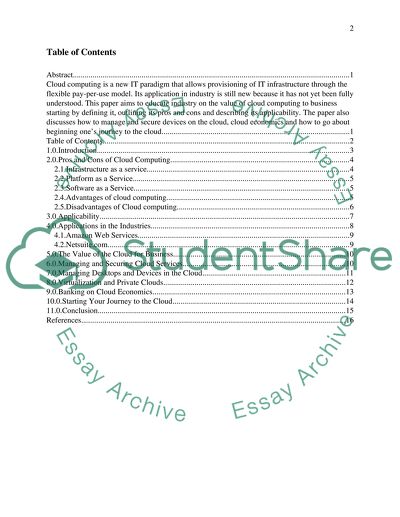Cite this document
(“Cloud Computing Essay Example | Topics and Well Written Essays - 3750 words”, n.d.)
Retrieved from https://studentshare.org/information-technology/1393056-cloud-computing
Retrieved from https://studentshare.org/information-technology/1393056-cloud-computing
(Cloud Computing Essay Example | Topics and Well Written Essays - 3750 Words)
https://studentshare.org/information-technology/1393056-cloud-computing.
https://studentshare.org/information-technology/1393056-cloud-computing.
“Cloud Computing Essay Example | Topics and Well Written Essays - 3750 Words”, n.d. https://studentshare.org/information-technology/1393056-cloud-computing.


